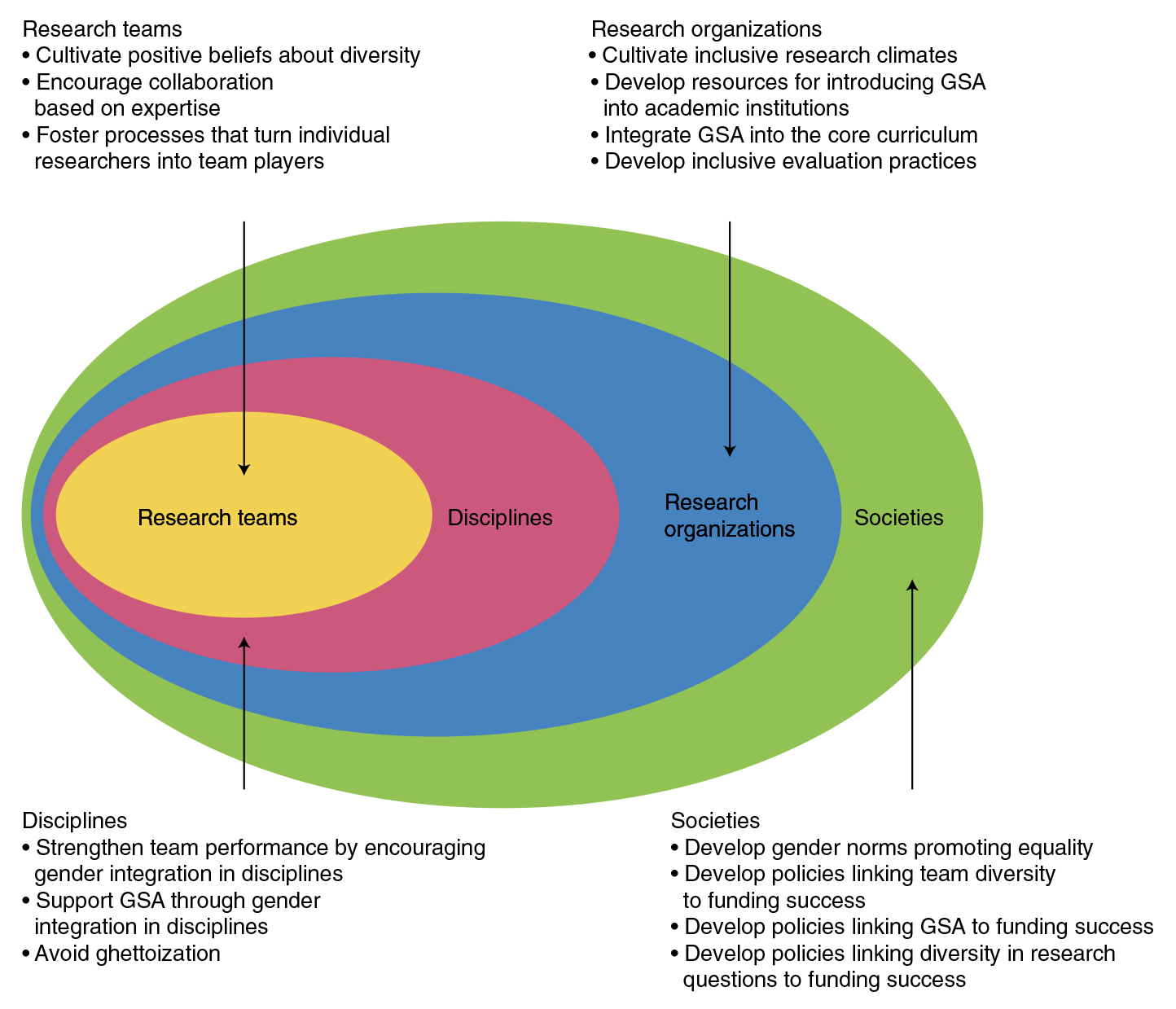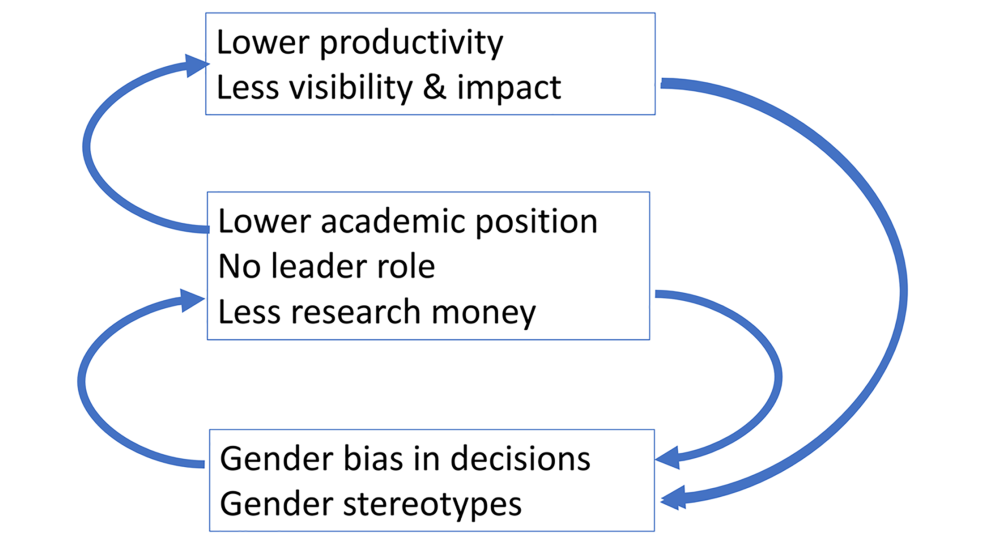UNCONSCIOUS BIAS
Unconscious Bias, also known as Implicit Bias, is defined as the result of a prejudice in favor of or against a person, or group compared with another usually in a way that’s considered to be unfair. Biases may be held by an individual, group, or institution and can have negative or positive consequences.
READ THE LATEST FACTS ON GENDER BIAS IN SCIENCE
Researchers from Aarhus University and Standford University (USA) recently published a collaboration paper in Nature that studies the effects of gender balance in the process of research. The article Making gender diversity work for scientific discovery and innovation explores the benefits of diversity for science. The study concludes that to understand the full potential of gender diversity, this needs to be supported by careful stewardship and management techniques across research team, research organisations and ultimately to the larger societies that shape them through specific gender norms and policies.

Specific management techniques in each domain — research teams, disciplines, research organizations and societies at large — are crucial to foster the benefits associated with gender diversity in research teams, in research methods and in research questions. Source
An article entitled: Vicious circles of gender bias, lower positions, and lower performance: Gender differences in scholarly productivity and impact, analysed the possible explanations for the under-representation of women in scientific productivity. Results suggests that “several factors together may disadvantage female researchers, as these have less opportunities to develop into a high productive researcher”. They concluded that gender equality policies are still needed to reverse the coupled vicious circles that produce the “glass ceiling”.

Fig. 1. Gender bias as coupled vicious circles (van den Besselaar P, Sandström U. 2017).
The League of European Research Universities’s (LERU) key recommendations on how to counter implicit bias.
- R1. Universities and other research institutions need to have regular monitoring in place to examine whether their organisational structures and processes are susceptible to a potentially biased access to resources that cannot be justified by the meritocratic principle. If so, they should develop and implement a plan to mitigate any identified bias. It is crucial that the university’s leadership commits to this plan, sees it through with appropriate encouragement, support and initiatives, throughout the organisation. Clear accountability should be assigned, with final responsibility for action resting with the President/Rector and the governing body.
- R2. Universities and other research institutions should examine crucial areas of potential bias and define measures for countering bias. Progress needs to be monitored and, if necessary, measures re-examined and adjusted.
- R3. Universities and other research institutions should gather expertise and organise gender bias training in various formats, including the possibility of anonymous training. There is no shortage of national and international resources which organisations can use.
- R4. Recruitment and/or funding processes should be as open and transparent as possible and be genuinely merit-based. This includes measures such as briefing selection committees about bias pitfalls, deciding on clear selection criteria at the outset, letting external observers monitor the selection process and involving external evaluators.
- R5. There should be close monitoring of potential bias in language used in recruitment processes.
- R6. Universities should undertake action towards eliminating the pay gap and monitor progress, examining bias as a contributing factor to pay gap.
- R7. Employees should be compensated for parental leave, making sure the process is bias-free, for example by extending fixed-term positions or calculating the leave administratively as active service, yet exempt from publication expectations.
- R8. Universities and other research institutions should monitor precarious contracts and part-time positions for any gender-based differences and correct any inequalities. Universities should examine conditions for part-time positions for professors and their gendered division.
- R9. Universities and other research institutions should undertake positive action towards a proper representation of women in all leading positions, making sure that leadership and processes around leadership are free from bias.
Find out more about Gender Bias in Academe on HASTAC.
